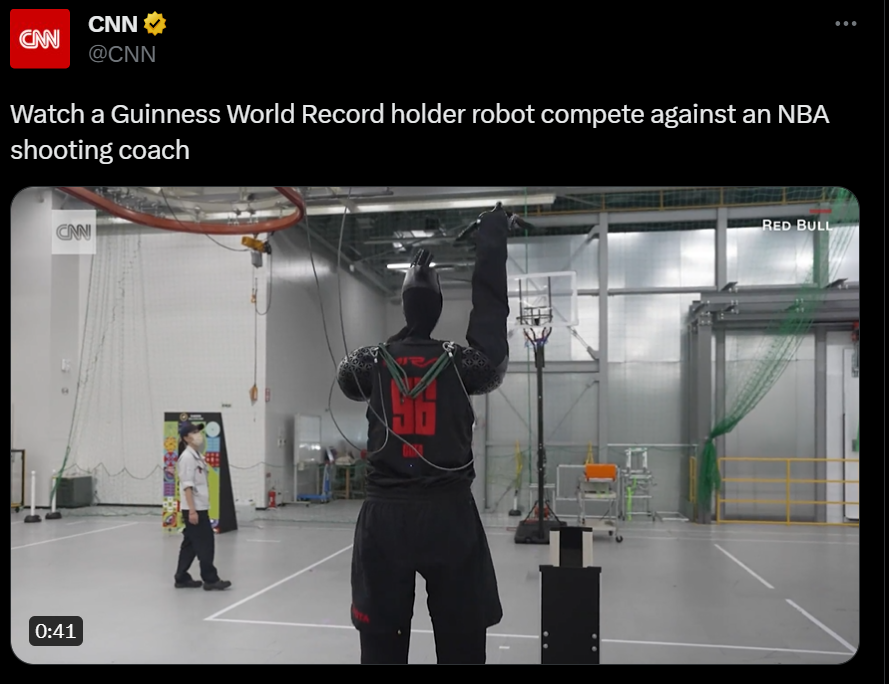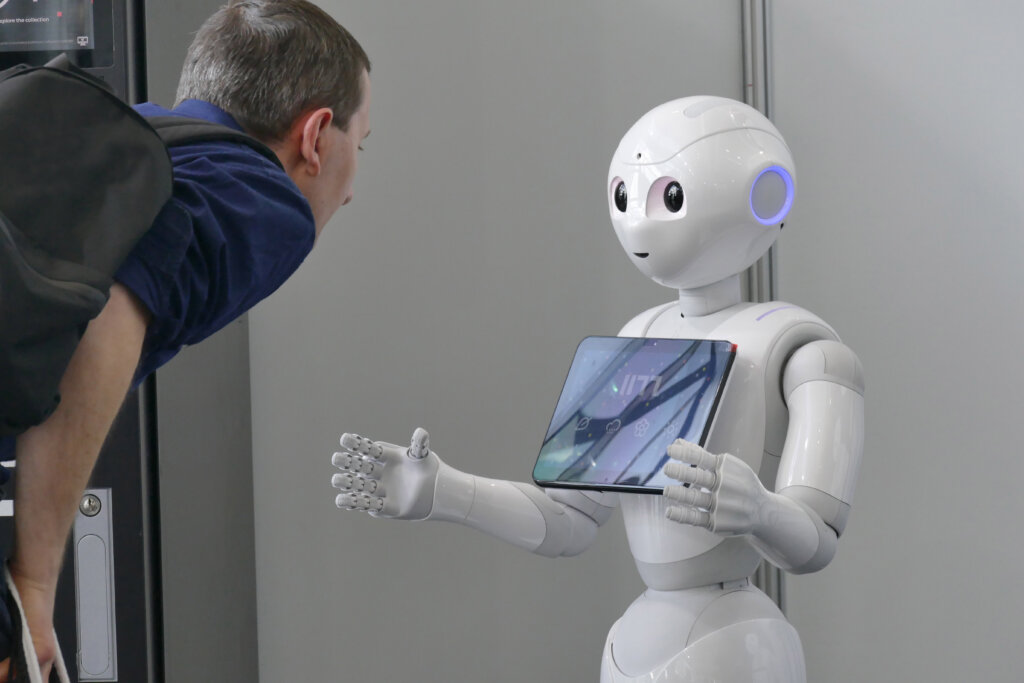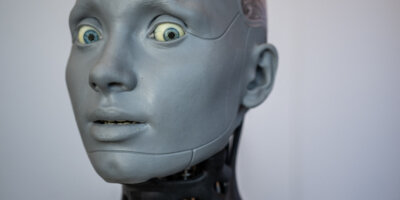
There are various types of robots that have evolved to revolutionize our world. (Source – Shutterstock)
The 5 most popular robots in the world
|
Getting your Trinity Audio player ready... |
- Robots, previously fiction, now shape our reality and industries.
- The robotics market is set to nearly double by 2027, emphasizing their rising significance.
- Robots, in various fields, are transforming from imaginative concepts to essential tools.
Robots, in their various forms and functions, have long seized the human imagination. These mechanical marvels, starring in countless works of science fiction from Isaac Asimov’s groundbreaking novels to blockbuster films like Star Wars, Wall-E, and I-Robot, have evolved from mere projections of human imaginations on the big screen to tangible, working marvels. The awe, fear, and fascination once associated with these creations of steel, wire, and silicon have been replaced by an appreciation of the many types of robots now transforming the world as we know it.
The concept of robots is no longer relegated to glossy pages of science fiction or the vivid graphics of a Hollywood movie. These ingenious inventions operate in various forms and functions here and have swiftly made themselves an integral part of everyday life. Whether they are assembling cars, cleaning homes, assisting in medical procedures, or even being friendly companions, robots are continuously expanding their presence and proving their importance in the world of humans.

CNN tweeted that a Guinness World Record holder robot compete against an NBA shooting coach. (Source – Twitter)
In financial terms, the global robotics market was estimated at approximately US$ 38 Billion in 2022 and is predicted to reach nearly US$ 70 Billion by 2027.
The potential for growth in the robotics market is tremendous, driven by cost reduction, improved quality, increased production, and enhanced workplace health and safety.
The types of robots changing the world
Multiple companies have taken initiatives to accelerate this market. For example, in March 2023, LG Uplus announced a partnership by signing an MoU with Bigwave Robotics (South Korea), a leading operator of robot automation platforms, to strengthen its robot business. And in July 2022, Hibot Corp. used its Float Arm robot to inspect pipelines that were difficult to access and unsafe for workers at the Mitsui Chemical plant in Japan.
Today, this article will walk readers through the five most popular types of robots shaping the world and future. From the silent titans of the industrial world to the autonomous vehicles revolutionizing transportation, these robots echo a world that was once purely science fiction but is now very much science fact. These five types of robots demonstrate technological prowess, the fruition of the wildest dreams, and a testament to the human pursuit of innovation.
Without further ado, let’s explore these mechanical wonders, draw connections from their cinematic counterparts, and understand their significant roles in contemporary society.
- Industrial robots – The titan of the manufacturing world
Like WALL-E, Pixar’s industrious and loveable waste-collecting robot, industrial robots are the tireless workhorses of the manufacturing industry. Unlike WALL-E, these mechanical marvels work in highly controlled environments, performing tasks ranging from welding and painting to assembly and product inspection. While not sorting trash like WALL-E, they’re ensuring cars, computers, and even favorite soda cans are assembled with precision and consistency.
- Service robots – At your service, anytime, anywhere
Service robots are here to serve, but not quite like Rosie from The Jetsons. Today’s service robots perform tasks ranging from vacuuming homes (think Roomba) to delivering room service in hotels. The rise of service robots has created a seamless blend of technology and convenience, ensuring mundane tasks are efficiently executed without a hitch.
There’s even Ameca, touted as the ‘world’s most advanced’ humanoid robot, which greets visitors at a museum in Dubai, UAE, after reassuring staff that it is not a replacement for them. Created by the Cornwall-based firm Engineered Arts, Ameca can answer questions and provide directions at the Museum of the Future, using AI to generate speech and mimic various facial expressions.
- Medical robots – Healthcare’s silent protectors
Much like Baymax, the inflatable healthcare companion from Big Hero 6, medical robots are the unsung champions of the healthcare industry. Though they may not be as huggable as Baymax, they conduct surgeries with pinpoint precision, assist in rehabilitation, and provide patient care. From the Da Vinci Surgical System to robotic prosthetics, these robots are altering lives and revolutionizing healthcare.
The Da Vinci System employs magnified 3D high-definition vision and controls that attach to a surgeon’s wrists and hands to perform precise incisions that might be challenging for human hands.
- Social robots – The budding companions of the future
Has anyone ever wished for a companion like BB-8 or R2-D2 from Star Wars? Look no further than social robots. These emotionally intelligent machines are designed to interact and communicate with humans, offering companionship, entertainment, and even education. Robotics companies like Softbank Robotics with their Pepper robot, and Anki with Cozmo, have brought to life once far-fetched dreams of having a robotic friend.

Softbank Robotics’ Pepper that is designed for people. (Source – Shutterstock)
- Autonomous vehicles – Hitting the road with robotics
When thinking of autonomous vehicles, one might imagine KITT from Knight Rider, adept at navigating through traffic. Contemporary autonomous vehicles, such as those developed by Tesla, may not have KITT’s capabilities, but they bring forth a revolutionary feature – the capacity to transport passengers safely and efficiently without human intervention.
With its FSD (Full Self Driving) software, Tesla’s cars can make smarter self-driving decisions thanks to hardware upgrades, enhancing the company’s overall AI capabilities. The company’s AI system gathers visual data from eight cameras on the car in real-time and produces a 3D output to detect obstacles, their motion, lanes, roads, and traffic lights, helping the cars make informed decisions.
Once a figment of imaginative screenwriters and dreamy sci-fi authors, robots are now an integral part of the world. Whether they’re making the next car, vacuuming floors, assisting in surgery, being a new friend, or even driving a car, robots are no longer just a novelty but a necessity. The future of robotics is not a matter of “if,” but “when,” and it’s safe to say that the future is now.
READ MORE
- Safer Automation: How Sophic and Firmus Succeeded in Malaysia with MDEC’s Support
- Privilege granted, not gained: Intelligent authorization for enhanced infrastructure productivity
- Low-Code produces the Proof-of-Possibilities
- New Wearables Enable Staff to Work Faster and Safer
- Experts weigh in on Oracle’s departure from adland


